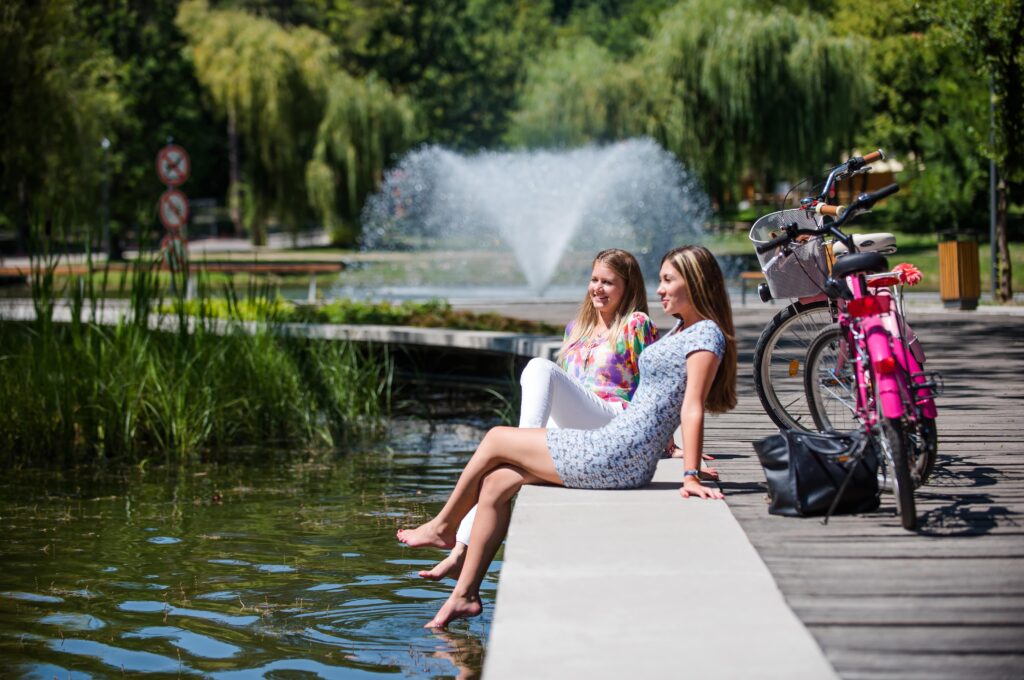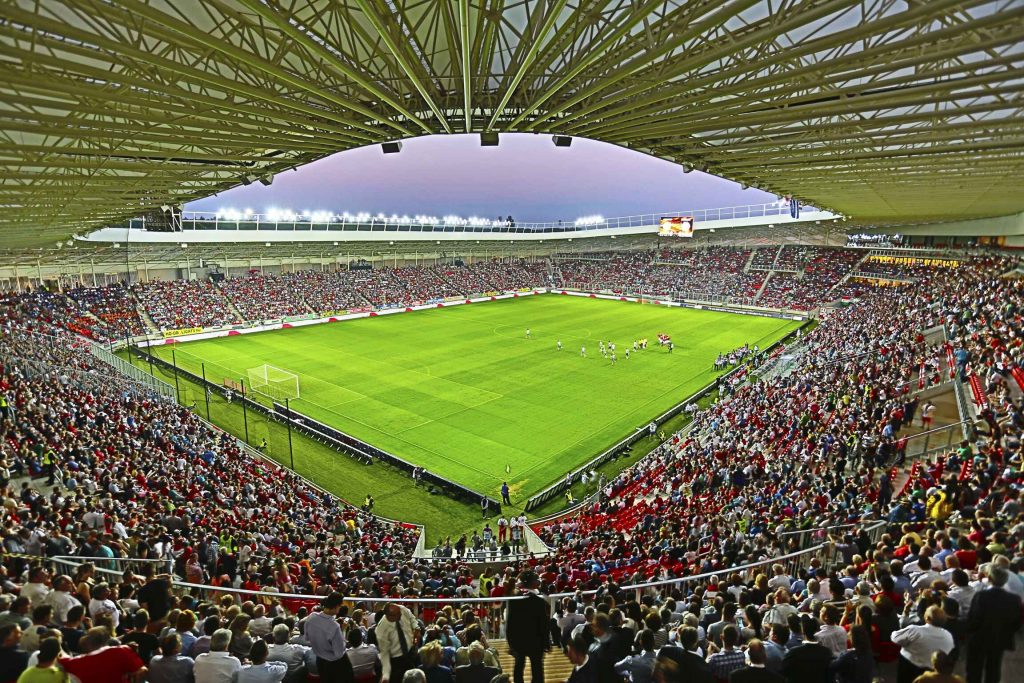Today, Nagyerdő (Great forest) is a place for quiet reflection and recreation, but until the end of the 18th century, it was wild and rarely visited. After two destructive fires, the boundaries of the city were extended, plots outside of the city were drawn into the interior and the forest became a popular destination over time.

In 1814 a large marketplace was created on the site of today’s Melius Library. From there, straight paths were designated to the forest. Soldiers began practicing in the woods at the time, including Obester Simonyi, who was tired of the huge dust clouds that accompanied the passage of people. He offered to install trees on both sides of the road at his own expense. Although the city undertook this with gratitude, in the end, it was the officer who did the planting and his men cared for the planted fir trees, but these died and were replaced over the years (today’s Simonyi Road are lined by linden trees). The road was named Simonyi Dam or Allele, and later, in the 1950s, it was officially called Gorkij Boulevard and the Nagyerdei körutat (Great Forest Boulevard of today) was Sztálin körútnak (Stalin Boulevard) at that time.
Since 1863
The location of the bath was laid by János Szabó, a city forester. There were already several buildings in the area at that time, including the gunpowder tower, which was close to today’s Leveles Csárda (Leafy Tavern). The building of today’s Medgyesy promenade hotel also stood, but at that time it was still a forestry office. The bathhouse was campaigned for in the 1920’s by Pál Beck, the royal commissioner, and engineer, was built by the young Ferenc Povolny (later became known as a master mason). The facility was leased until World War II.
By the 1830’s the masses were already frequenting the forest paths at that time, which caused severe damage in parts that were close to the city. As a result of increased traffic, in 1883, forester Gábor Török prepared the public welfare plan for forest management. The essence of this was that the park forest was completely cut out of the wild forest, villa plots could be established all the way around, and the plots of city villas were also designated for today’s promenade by the specialist but only three of these were realized.
It was decided by the city planners that these villas could only be used as summer residences (between April and October). They were destined to be built by the city contractor for the city. In 1884 the steam railway traffic started and then in 1911 the trams. Today’s tram circuit has been in operation since 1927. Roadside and pedestrian plots were so expensive that interest in them only really picked up in the 1930s. The water tower was built in 1913, and at that time the first Leaf Tavern was still standing next to it. The second place of the nightclub fell to the entrance of the later campsite, and finally to the Medgyessy promenade.

Compensation to the state
Among the major investments in the area, the steam bath opened in 1877 and was remodeled in 1916. The water park/beach bath, indoor pool, and boating opened in the early 1930s, as did the Public Cemetery. In connection with the latter, it was said that there was a shooting range between today’s Oláh Gábor Street football field and the cemetery area, so no trees had to be cut down during the construction of the Public Cemetery, as almost all of them had already been cleared by the soldiers. The facility was designed by József Borsos, who was also one of the creators of the Park Forest development plan. In order to remove the park forest from the state forestry area, Debrecen had to compensate the state.
In the Nagyerdő, the diakonisszaképzőt (Reform Church’s – Decon Training Institute) was established on 19 hectares in 1936, and then the zoo and amusement park were built in 1958–60. 1952 was the year of the penicillin factory, Biogal operating since 1960, it was said the reason for its choice of location was the proximity of the university and the clean forest air. Since 1992, the entire area of the Great Forest has been protected, and it is now also a Natura 2000 nature reserve. The new football stadium was built in 2014 and the park forest area was also renovated.

Source/Inspired by: Haon